Hiking out in the wild we always trust in modern navigation tools such as satellite communicators and GPS navigators, high definition online maps, GPS and compass apps. But what happens if there is no mobile network, no GPS signal or – even worse – no battery anymore?
This article helps you to find your location with a simple and reliable mirror compass and a good old-fashioned map.
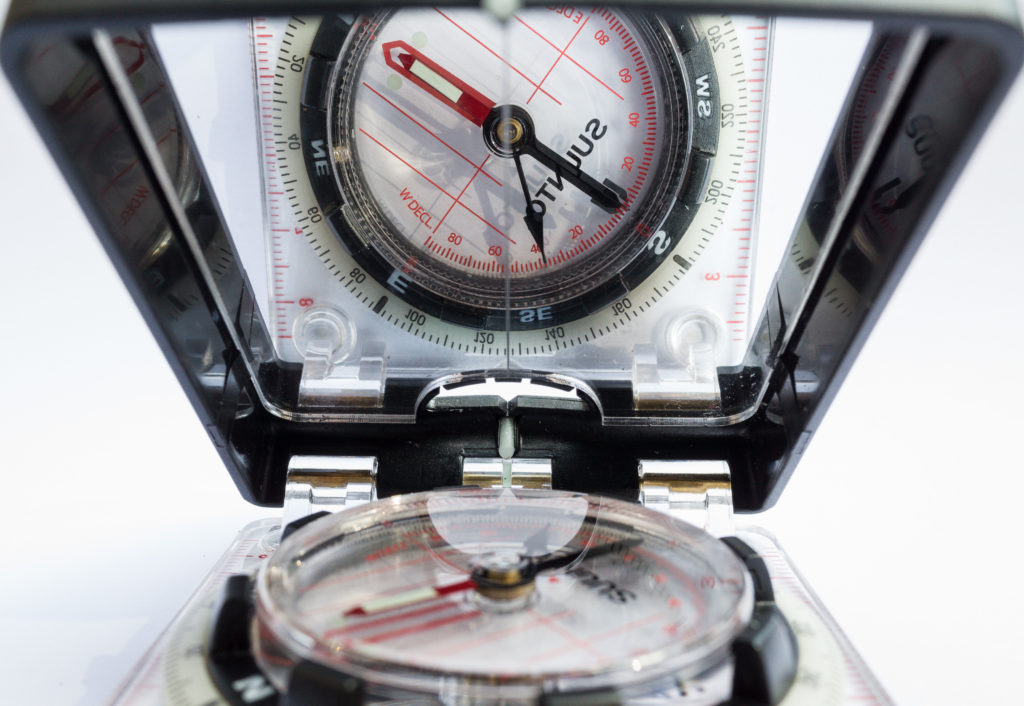
What do you need?
- Mirror compass
- Map
- Pencil
Mirror compass
Back in my army years I used the solid and almost undestroyable Recta DP-6, which is now available at SUUNTO. Nowadays my mirror compass is still a SUUNTO – I love the SUUNTO MC-2 for its modern and lightweight design and good quality of its materials – it’s water- and weather sealed and can be used also at night.
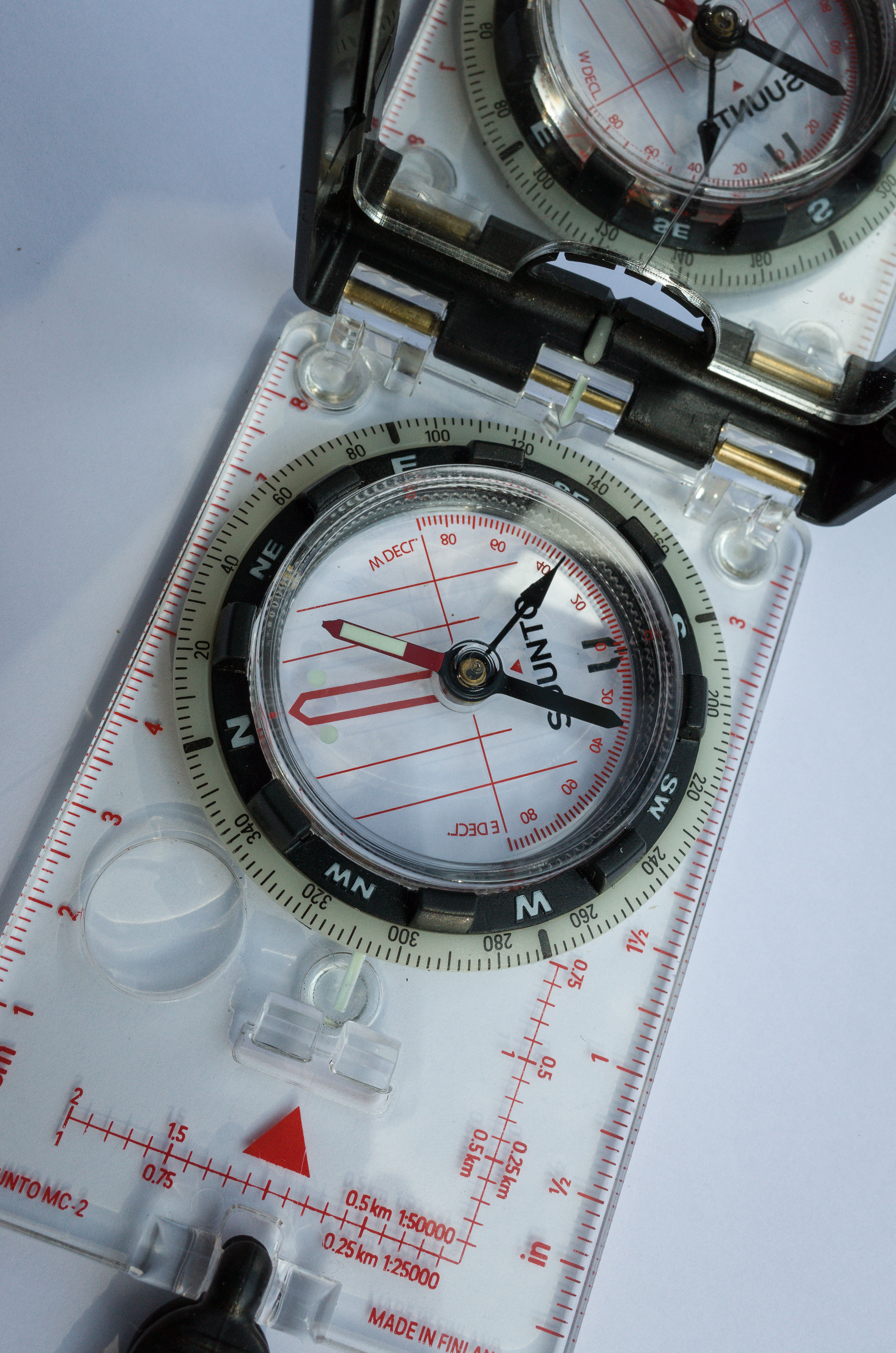
Make sure you are familiar with the anatomy, the components and the basic handling of your mirror compass. Remember to initially adjust the magnetic declination. More information about magnetic declination you will find at NOOA, swisstopo a.o..
Map
You can use any map – the more detailed it is, the better – I prefer maps at 1:25,000 scale. In my example I used two maps of swisstopo, map no. 1333 Tesserete and map no. 1334 Porlezza.
Pencil
Any pencil will work, even in rainy and snowy weather conditions.
That’s it. As all the necessary prerequisites are ready let us start.
1- Orienting the map
Hold your compass level and turn the map in order to orient it to the North. The upper edge of the map is always in the North. Use your compass needle as shown below.
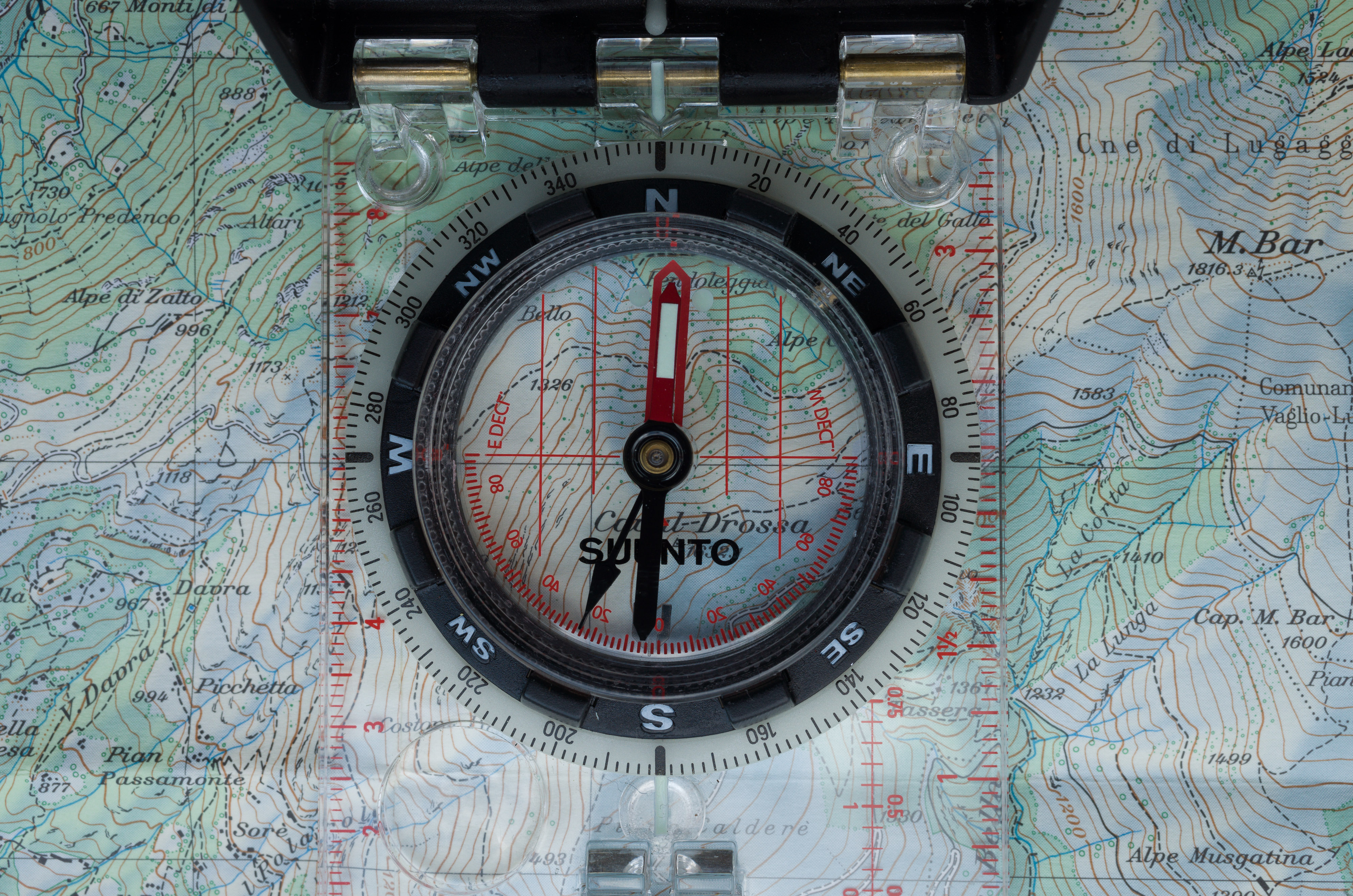
2- Sight a bearing
- Open the mirror and hold your compass at eye level so you can read the capsule from the mirror.
- Find a visible object that is identifiable on your map. By the way, if your object is not visible or if it isn’t identifiable finding your location is not possible.
- Align your object with the sighting notch or hole, keeping the center line on the mirror in the line with the center of the capsule.
- Hold your compass steady and turn the capsule until the orienting arrow and needle are aligned.
- Read the numerical bearing from the bearing index.
Sounds complicated? It’s not. See the image below.
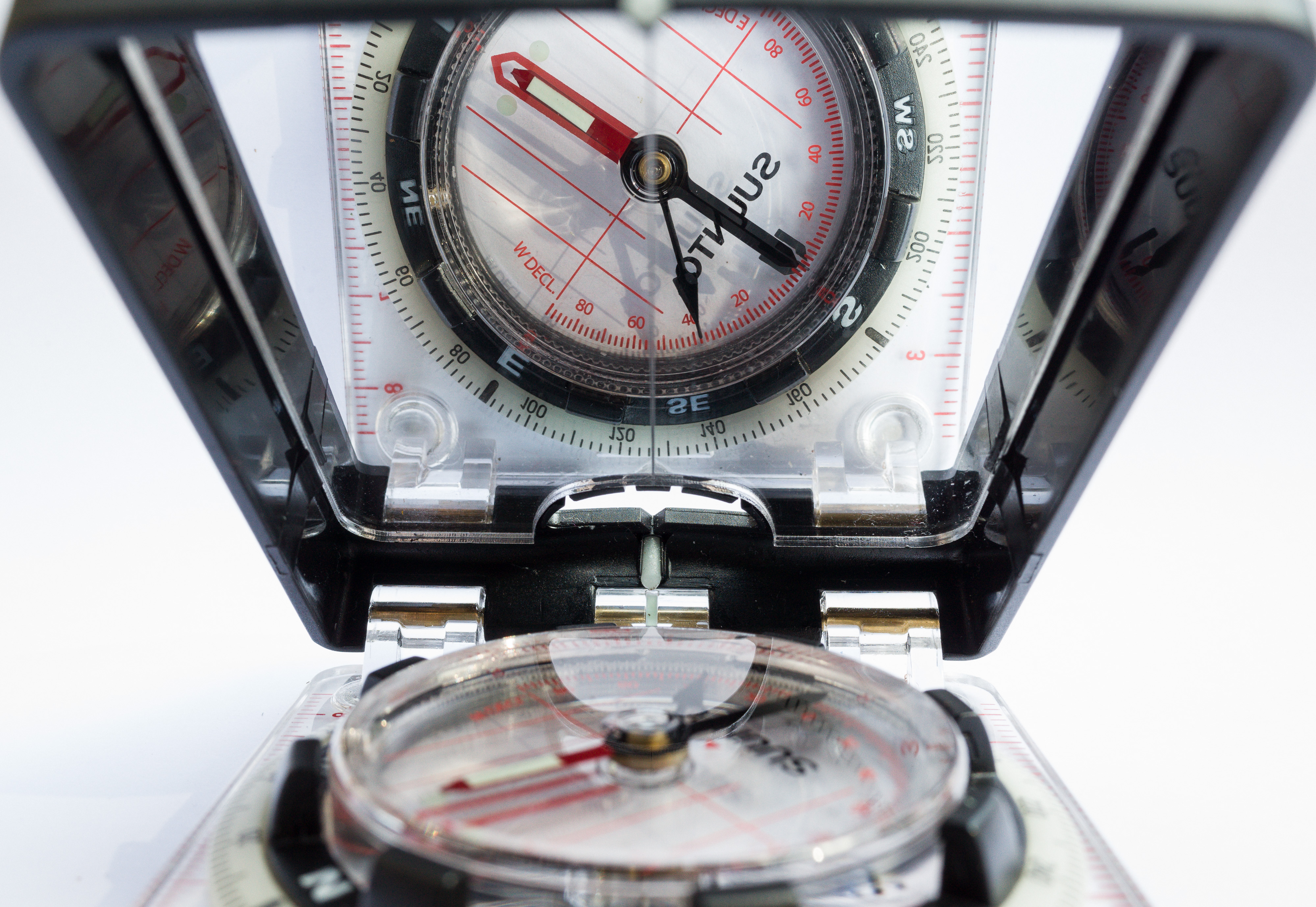
In my example I chose 2 objects, both visible and identifiable.
Object 1: Cima di Fojorina
Object 2: Denti della Vecchia
Photographs of the objects see here.
For highest accuracy the objects should have a right angle (90°) to your location.
3- Line pointing to your object
Be careful not to change the numerical bearing on the bearing index (see step 2- Point 5). On the map, orient your compass until the orienting lines of the compass and the coordinate grid on the map are parallel and draw a line pointing to your object. Use the long edge of your compass as a ruler.
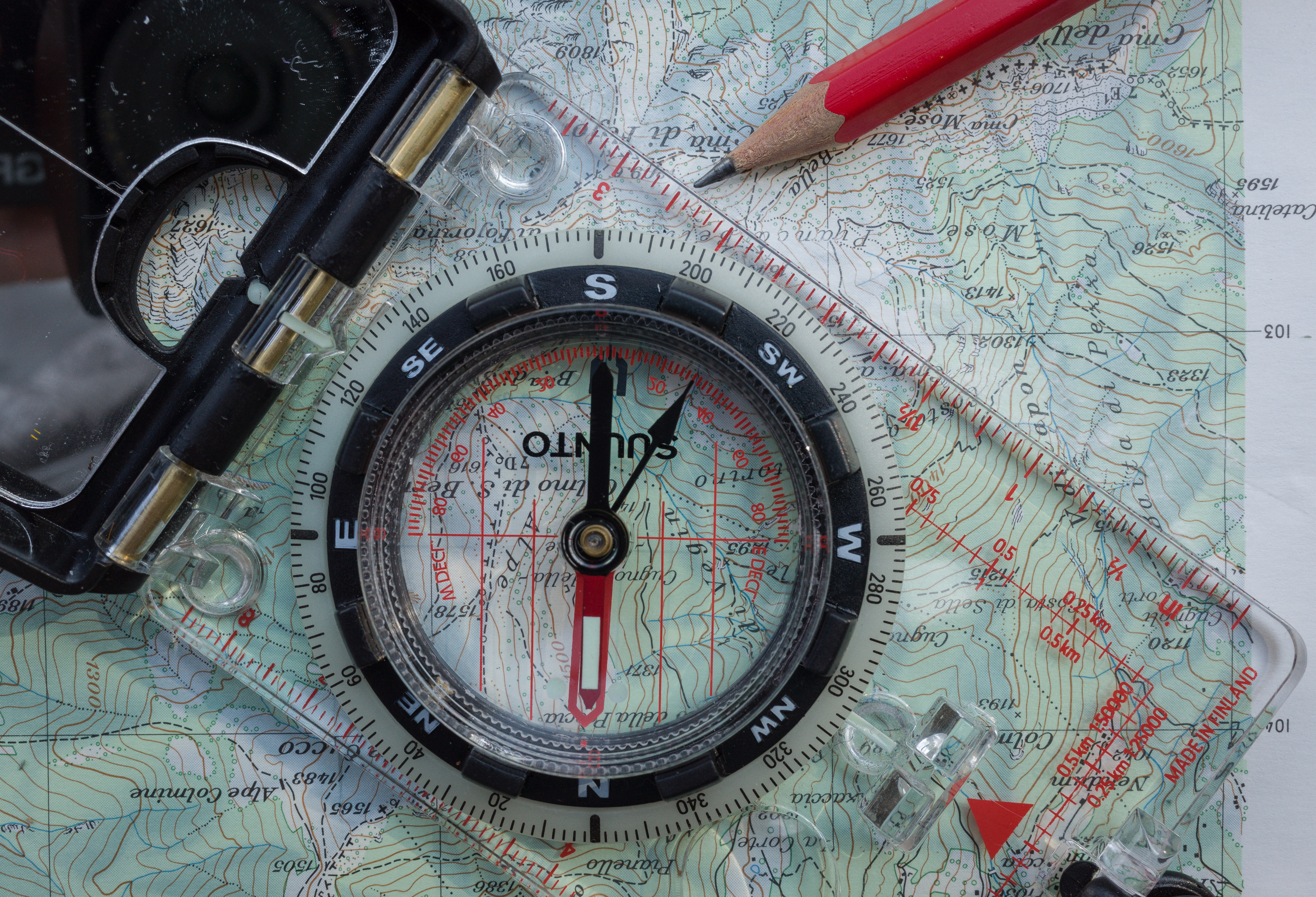

Repeat Steps 2- and 3-
Repeat step 2- and step 3- for the other object.
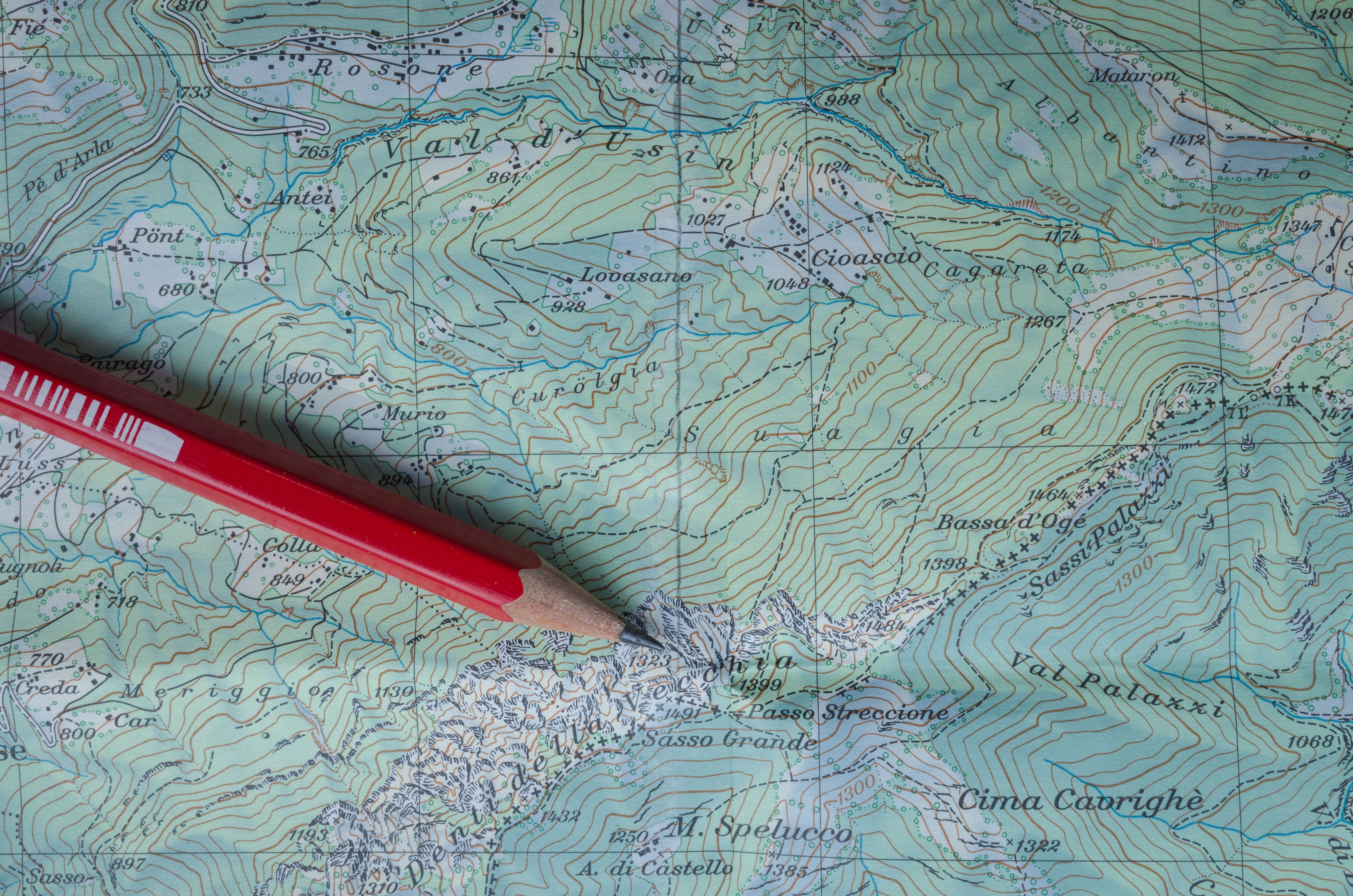
Your position – point of intersection
Finally there will be two lines on your map. Their point of intersection will be your position.
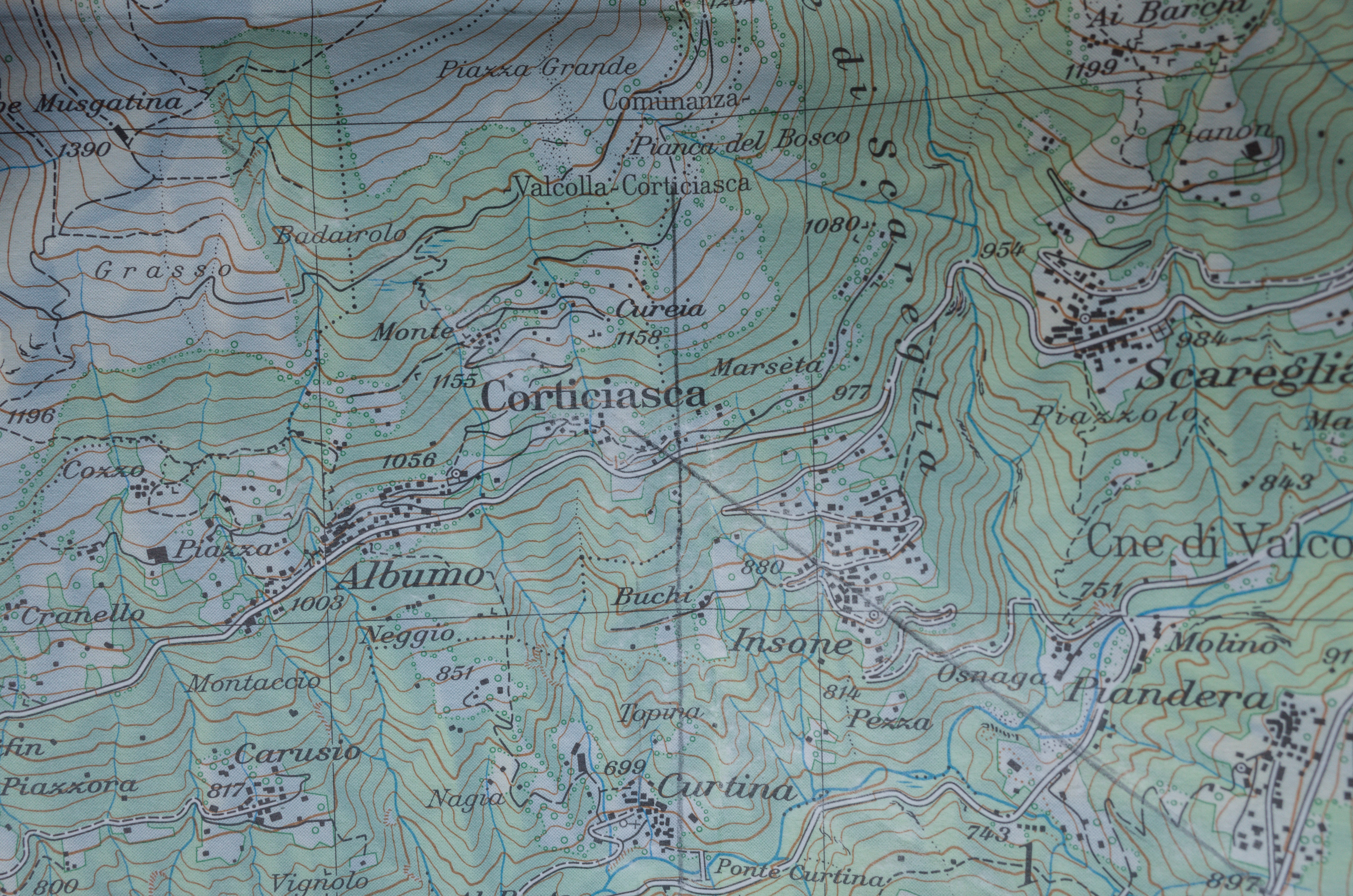
How accurate is it?
The accuracy depends on the angle between the two objects (should be 90°), on the two bearings and on the drawing precision on the map – in my example I reached an accuracy of about 50 m to the real location – quite good in my opinion!
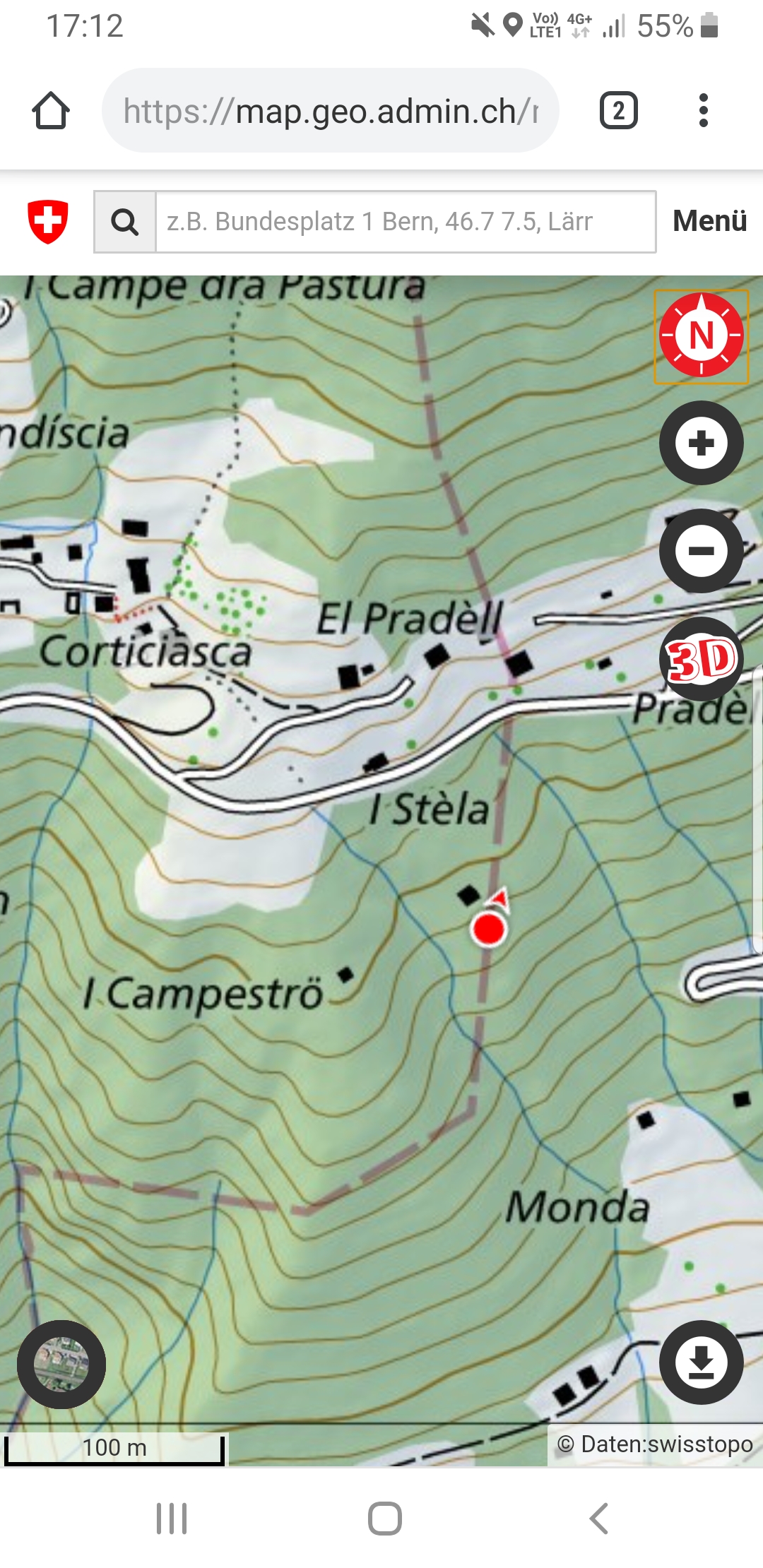
Final tips
Tip 1: If you are interested in mirror compasses and would like to know all of their features, you can read the user guide of the SUUNTO MC-2 here.
Tip 2: Always determine your actual location and the direction of your next map point before going to sleep. Maybe the next morning the visibility will be only a few meters, so it’s always helpful to know your exact location and in what direction to go. 😉 Thank God I acted exactly accordingly on my solo hike in Northern Iceland during the onset of winter in fall 2017. I would have been lost and found in a glacier 20,000 years later as Swiss Yeti. 😉
Images: Ricoh GR II, GR Lens f=18.3 mm 1:2.8. .DNG RAW format. Edited in Adobe Photoshop Lightroom.
Did you like this blog post?
Thank you for your comments!
Your comment in the comment section below is highly appreciated, thank you!
Home
Thank you for reading.
You can sign up for my newsletter here.


heheh I know about this stuff I really look forward to taking part in the navigation course number III hehe
Thank you Cécile.